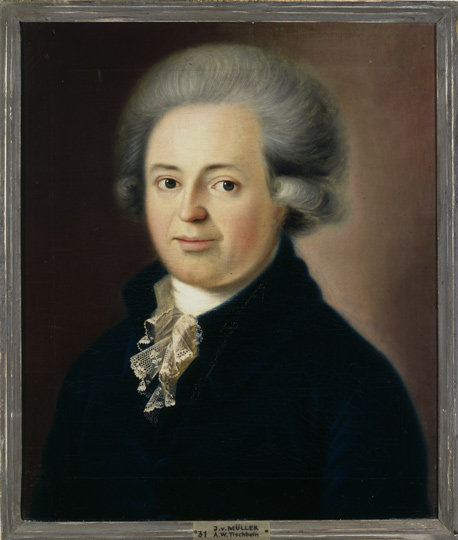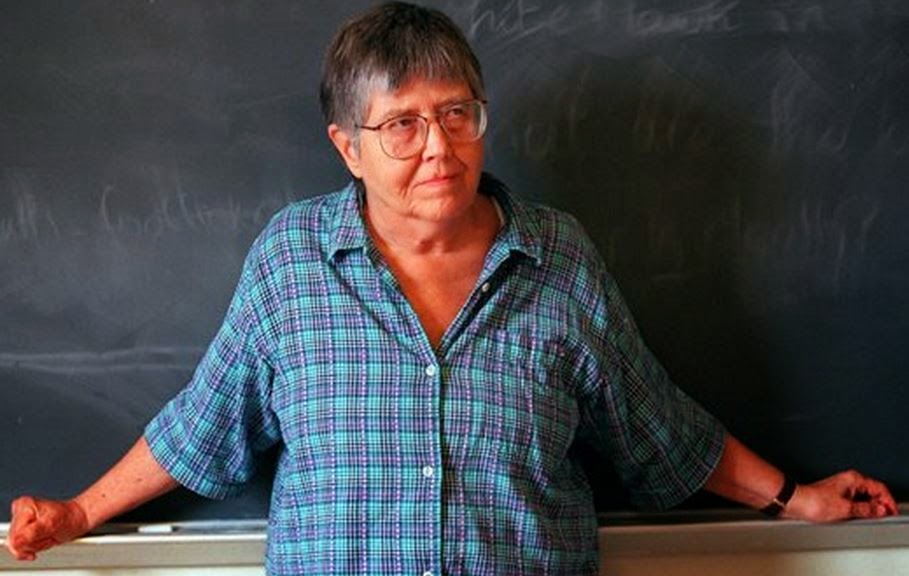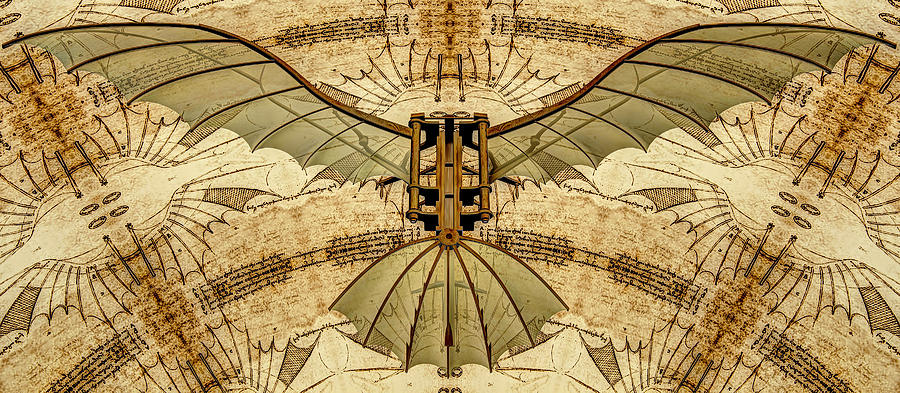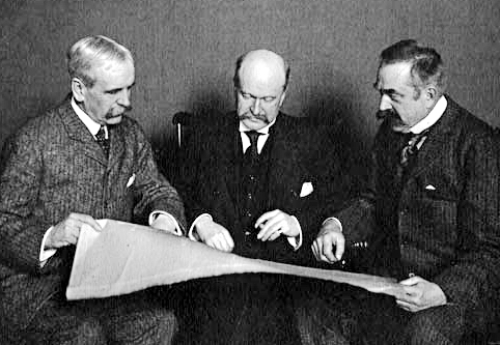January 03
JOHANNES VON MÜLLER, Swiss historian, born (d: 1809); That the name of this once famous Swiss historian is hardly a household name is not exactly surprising. It would probably be easier to climb the Matterhorn in a blizzard than to tackle Müller’s Geschichten der Schweizer (Swiss History), a project that occupied most of his life and took him more than forty years to complete.
And it would probably be more practical to climb the Matterhorn as well, since Müller’s tome (eighteen volumes in the French translation) is now considered hopelessly unreliable, even though in its day it stirred Swiss nationalism and had profound influence.
Müller’s place here is due to his favorite extracurricular activity – writing love letters to Charles Victor de Bonstetten, a young, devastatingly handsome Swiss writer whose greatest talent was apparently turning on academic types who had passed through menopause at age 22. (Charlie will surface again in these pages when he causes that grayest of English poets, Thomas Gray, to do nip-ups at age 53.)
Müller’s love letters, among the loveliest ever penned, were published in 1835, twenty-five years after his death. Long before then, however, Goethe had gone on record declaring Müller’s sexuality. It was another classic case of it taking one to know one.
MARY DALY, American feminist scholar and theologian, died (b: 1928); Daly taught at Boston College, a Jesuit-run institution, for 33 years. In a widely reported case at the time, she was denied tenure, a development interpreted by many as a response to her book, The Church and the Second Sex.” After more than 1,500 students signed a petition supporting her – most were men, for the college did not admit women to its liberal arts division until 1970 – she was reinstated with tenure.
Daly taught classes at Boston College from 1967 to 1999, including courses in theology, feminist ethics, and patriarchy. Daly's refusal to admit male students to some of her classes at Boston College also resulted in disciplinary action.
While Daly justified her position on the grounds that their presence inhibited class discussion, Boston College consistently reprimanded Daly, claiming that her actions were in violation of title IX of federal law requiring the College to ensure that no person was excluded from an education program on the basis of sex, and of the University's own non-discrimination policy insisting that all courses be open to both male and female students. In 1998, a discrimination claim against the college by two male students was backed by the Center for Individual Rights, a conservative advocacy group.
Following further reprimand, Daly absented herself from classes rather than admit the male students. Boston College removed her tenure rights, citing a verbal agreement by Daly to retire. She brought suit against the College disputing violation of her tenure rights and claiming she was forced out against her will, but her request for injunction was denied by Middlesex Superior Court, Judge Martha Sosman.
An out-of-court settlement was reached in which Daly agreed that she had retired from her faculty position. However, Daly maintained that Boston College had wronged her students by depriving her of her right to teach freely.
She documented her account of the events in the 2006 book Amazon Grace. Daly protested the commencement speech of Condoleeza Rice at Boston College and continued to speak on campuses around the United States as well as internationally.
Her own description of herself was a “radical Lesbian feminist” and “post-christian” considering most, if not all, organized religion to be irreparably patriarchal.
LEONARDO DA VINCI unsuccessfully tests a flying machine. More on Leonardo on the anniversary of his birth, but for now, as an engineer, Leonardo conceived ideas vastly ahead of his own time, conceptualizing a helicopter, a tank, concentrated solar power, a calculator, and the double hull, and outlining a rudimentary theory of plate tectonics. Relatively few of his designs were constructed or even feasible during his lifetime, but some of his smaller inventions such as an automated bobbin winder and a machine for testing the tensile strength of wire entered the world of manufacturing unheralded. As a scientist, he greatly advanced the state of knowledge in the fields of anatomy, civil engineering, optics, and hydrodynamics.
Beyond friendship, Leonardo kept his private life secret. Within his own lifetime his extraordinary powers of invention, his "outstanding physical beauty", "infinite grace", "great strength and generosity", "regal spirit and tremendous breadth of mind" as described by Vasari attracted the curiosity of others.
Many authors have speculated on various aspects of Leonardo's personality. His sexuality has often been the subject of study, analysis and speculation. This trend began in the mid 16th century and was revived in the 19th and 20th centuries, most notably by Sigmund Freud.
Leonardo's most intimate relationships were with his pupils Salai and Melzi, Melzi writing that Leonardo's feelings for him were both loving and passionate. It has been claimed since the 16th century that these relationships were of an erotic nature. Since that date much has been written about his presumed homosexuality and its role in his art, particularly in the androgyny and eroticism manifested in John the Baptist and Bacchus and more explicitly in a number of drawings.
After researching and writing this collection for more than a decade, it was a pleasant surprise to discover some new bit of Gay history one afternoon. Listening to All Things Considered on a drive home to upstate New York from Connecticut on New Year’s Day, we listened to author and biographer Mosette Broderick discussing her book, Triumvirate: McKim, Mead & White: Art, Architecture, Scandal, and Class in America's Gilded Age (Knopf ISBN-10: 0394536622), a multiple biography of the three architects who shaped the American architectural scene well into the 20th century (the firm still exists, though under a different name, now).
I nearly drove off the road when she dropped this little tidbit into the conversation. “It’s quite clear from their letters that something happened between them while they traveled in Italy.” The “them” she refers to is no less than architect Stanford White and his longtime collaborator – and now, it would seem, lover – August Saint-Gaudens. Yes, Stanford White was eventually (and now one might suggest “ironically”) shot by the irate cuckolded husband of actress Evelyn Nesbitt, Philadelphia plutocrat Harry K. Thaw. And yes, August Saint-Gaudens was a married man.
As the French say chacun à son goût!
And as we say: Whatever.
In the book Broderick goes into great detail about the relationship, but some particular things jump off the page to the careful reader. Though Saint-Gaudens was, indeed, married, it seems that this was a classic marriage of convenience, particularly for Saint-Gaudens for whom the marriage meant financial security found in the wealth of his wife and her family. When she attempted to make “an arrangement” for White with her own sister, White wrote to friends protesting,
“’I am sure that she – or any other girl – is not for me.” Broderick goes on, “White’s remarks about women and marriage seem to indicate a lack of interest in any serious relationship. Indeed, beyond a generic reference to “pooty” girls, there is little other indication of ending his bachelor status.”
Oh those bachelors! “Pooty” girls. Indeed.
But perhaps the most telling…and dare we say romantic...story Broderick relates is of the two men’s sojourn together in Italy.
“While in Italy alone with Gus [August Saint-Gaudens] who had been in Italy twice before and could act as a guide, something happened between the two of them that cannot be fully ascertained. White’s letters, which were carefully edited by his son in the Depression years, contain references to an incident that almost cost the men their friendship. With an ocean between them in the following months each writes the other admitting blame and urging the other not to be too serious about what happened. Gus seems to do the bulk of the apologizing for his behavior. The language used by the two—who address each other as “beloved” and even “doubly beloved” and sign their missives as “ever lovingly thine”—indicates a possible pass made at White by Saint-Gaudens. Although probably the act was rejected, an ambiguity toward homosexual moments appears in their letters from this point forward; both words and drawings seem to indicate a shared experience, and their old motto Kiss My Ass, used as an ending for letters, becomes more serious when signed with graphic cartoon drawings.”
Subscribe to Gay Wisdom
Would you like to have Today in Gay History (aka Gay Wisdom) sent to you daily?




